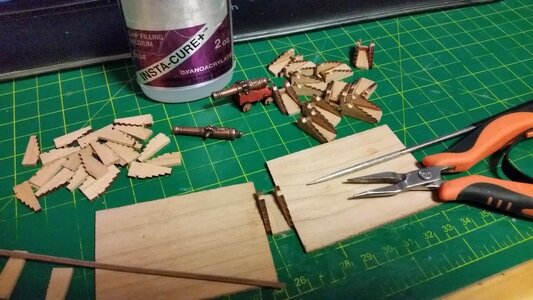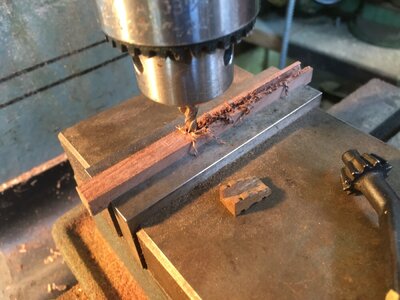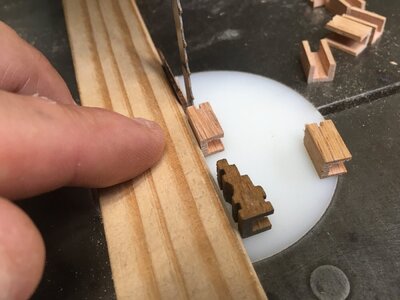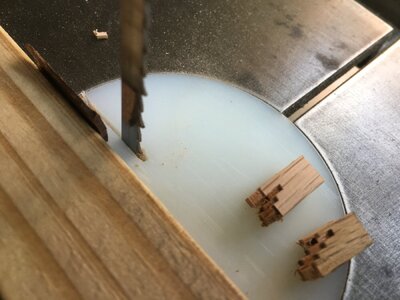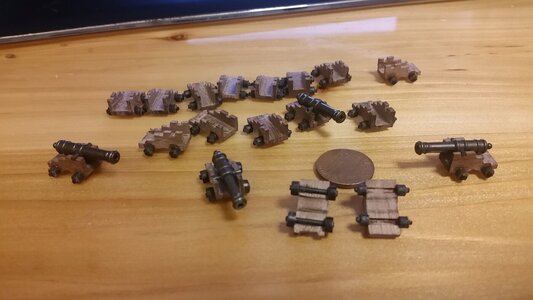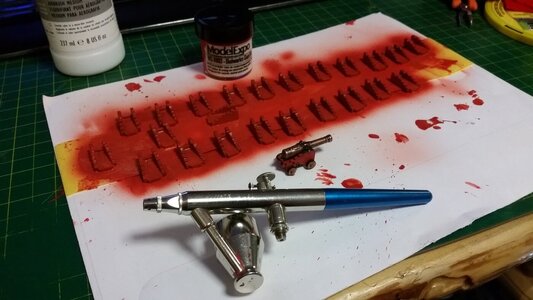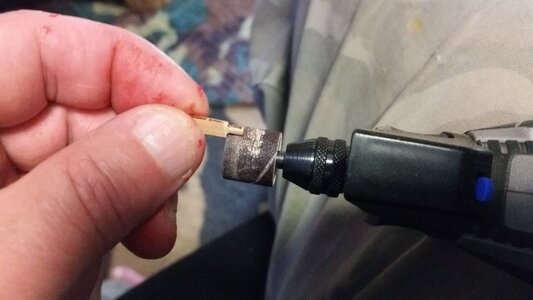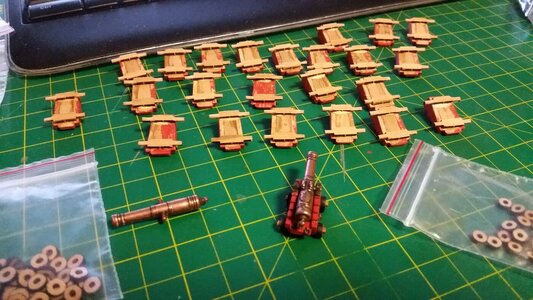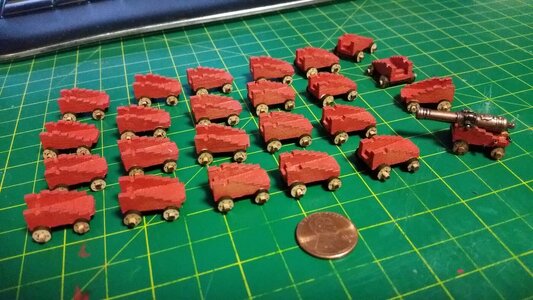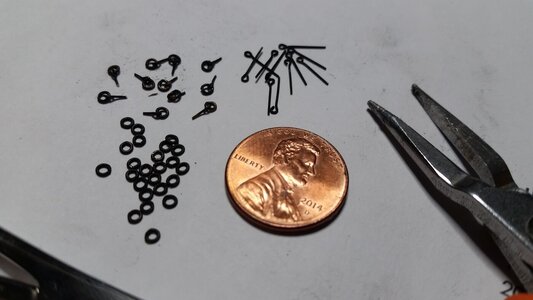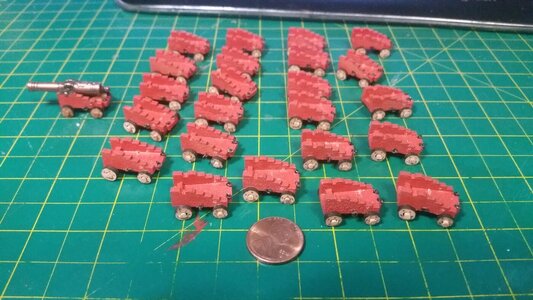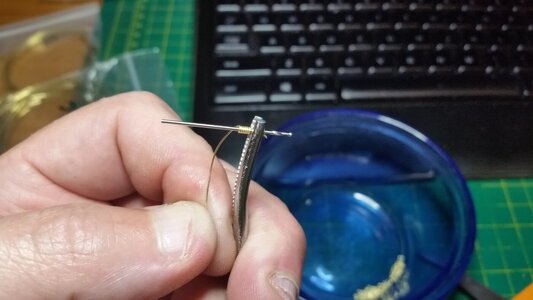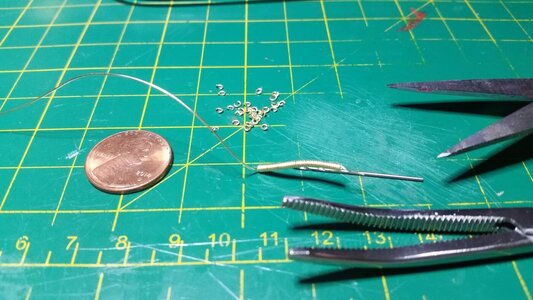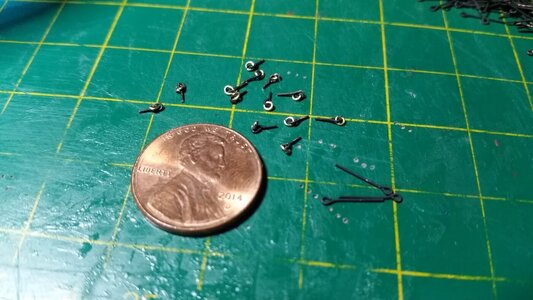Actually, you can see the blackening wearing off the rings, leaving a reddish area that does a fair job simulating rust! You have to let the oxides harden overnight, like you do when acid bluing guns. I didn't do that... cuz I'm impatient. I wanna see the cannon of VII drake completed, because it's cool. I use Birchwood Casey "Brass Black". The trick with blackening is that the parts must be clean. That means no microscopic oil film from anything, especially your fingers. Buy some denatured alcohol and wash the brass parts in that, then while wearing gloves, move the parts to the brass blackening acid. In about 5-10 minutes, they should be done. Rinse the parts in cold water and try not to move them around and rub them on anything. After drying and a day of sitting, the black shouldn't just flake off leaving a dull copper surface, but stay on the part pretty well. It's not perfect, but it works. Bending the part or using metal tools to hold or clamp it will rub off the black, and at that point I don't bother trying to use the acid to touch it up, I just use paint, especially if the part is already on the model.Hi Kurt,
You are achieving better blackening than I am. Would you share your technique / product selection with me please?
Now, if you want to darken brass or copper cannon barrels to simulate bronze, you want "Brass Darkening Solution". Here is a link: Brass Darkening Solution on Amazon
This stuff is GREAT. Instead of black, you get brown bronze. Perfect for us guys who make truly elegant ships from the time when they were floating art palaces, not like later when all they did was just blow shit up.
Last edited:




